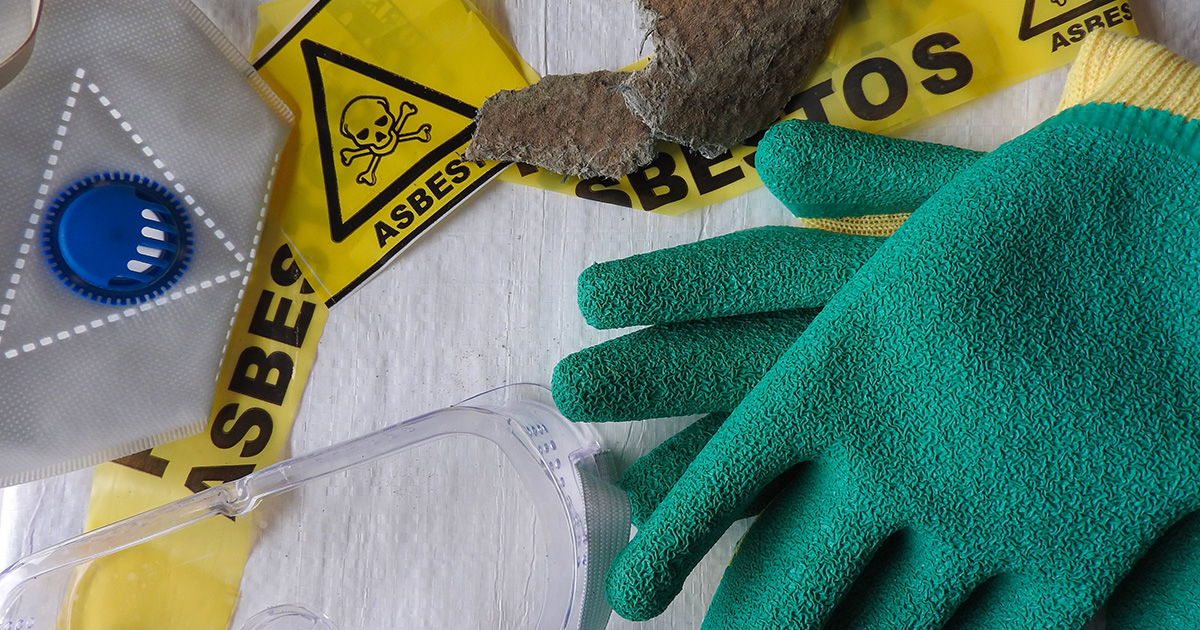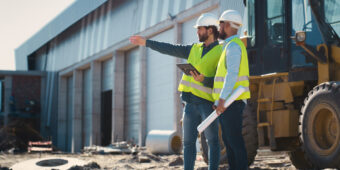Are you asbestos aware?
27 May 2024, Learn, Prove Your Know How, Safety

Asbestos removal has been in the headlines recently, with concerns that asbestos awareness in the construction industry is still not as high as it needs to be to prevent deaths. As New Zealand’s leading killer in the workplace, Site Safe asks if you’re sure you’re prepared to address it safely?
If asbestos-containing materials (ACMs) are disturbed, tiny fibres are released. These fibres are hazardous if breathed in and could lodge in the lungs, with potential to cause diseases such as asbestosis, lung cancer, and mesothelioma.
If you don’t take the right precautions to protect yourself, you could risk your life, livelihood and family.
Friable ACMs are especially dangerous, as the fibres are easily released into the air. Non-friable asbestos is also risky, as it can become friable if damaged or old.
How do I know where asbestos is onsite?
Asbestos is encountered by many tradespeople but is especially dangerous in demolition environments. Sanding, drilling and cutting ACMs also release the fibres.
ACMs are commonly found in:
- Insulation.
- Soundproofing.
- Sprayed-on fireproofing.
- Decorative coatings.
- Floor coverings (eg; vinyl).
- Cladding.
- Roofing.
An asbestos management plan sets out where any identified asbestos or asbestos-containing material is present, and how it will be managed. A copy of the asbestos management plan should be readily accessible to workers and their representatives, as well as to other person conducting a business or undertaking (PCBUs).
What should I do if I suspect asbestos is present?
If you have any suspicion that asbestos is present before you even start work, get an asbestos survey completed by an asbestos surveyor.
An asbestos surveyor should have:
- Sufficient training, qualifications, knowledge, experience.
- An ability to sample and identify asbestos through an IANZ-accredited laboratory.
- Sufficient knowledge of the tasks required and the risks the work will involve.
- Independence and use of a quality management system.
If you do uncover or damage materials that you think might contain asbestos:
- Stop work immediately.
- Keep people away.
- Minimise the spread of contamination to other areas.
- Get advice on what to do next from a licensed professional.
If you have identified asbestos and it needs to be removed because it’s in poor condition, or as part of renovations, then it’s time to call in a licensed asbestos remover. WorkSafe NZ is responsible for licensing asbestos removal professionals. The only exceptions are if the removal:
- Is 10m2 or less of non-friable asbestos or asbestos-contaminated dust (ACD) associated with the removal of the non-friable asbestos over the whole course of the removal project, or
- ACD that is not associated with the removal of friable or non-friable asbestos and is only a minor contamination.
How can I protect myself?
Three simple steps will help keep you safe if you encounter materials you suspect might be ACMs:
- Keep dust down.
- Use the right PPE.
- Clean up properly.
Other risk controls include:
- Containing and isolating sites where ACMs are present.
- Ensuring that trained professionals carry out the removal of ACMs and ACDs.
- Using plastic drop sheets in ACM work areas.
- Using full and oversized disposable PPE and the minimum of a disposable P2 mask.
- Using only micro filter vacuums.
- Using low-pressure wet work methods (sprayers) and not pressured water hoses (including garden hoses).
- Training of all workers likely to encounter asbestos.
- Properly cleaning areas and wiping down surfaces.
- Disposing of ACMs as per guidance.
- Disposing of PPE in a double bag and clearly labelled as containing ACD.
How can I protect others?
Communication with everybody who may be affected by the work is critical to keep everyone safe. This includes:
- Workers and any other people in the workplace.
- The person who commissioned the asbestos removal work.
- Any person at or near the workplace (eg, neighbours along boundary fences).
- Anyone occupying premises near the workplace.
Communications must clearly state:
- Why the work is being undertaken.
- What is involved with the work.
- When it will start and finish.
- The safeguards that will be in place during the works.
****************************************************************************
Myth busting!
Myth: It’s easy to spot asbestos.
Fact: Asbestos isn’t always easy to identify. The only accurate way to confirm its presence is through asbestos testing conducted by an IANZ-accredited laboratory.
Myth: I can remove non-friable asbestos myself.
Fact: Non-friable asbestos is still risky as it can become friable if damaged or old.
Myth: This building was built after 1 January 2000, she’ll be right.
Fact: It is still possible for buildings built after the year 2000 to contain asbestos. Products containing asbestos were able to be imported until October 2016. Asbestos can be in places that you might not expect, so you could encounter it without knowing.
Myth: Effects from asbestos exposure will be immediately felt.
Fact: Asbestos-related diseases take years to develop (and not all people exposed develop such diseases).
Site Safe is a not-for-profit, membership-based organisation that supports a culture of health and safety in New Zealand construction. For more information go to: www.sitesafe.org.nz
Register to earn LBP Points Sign in
2 Comments
Leave a Reply
You must be logged in to post a comment.




Definition of friable not found in text??
.